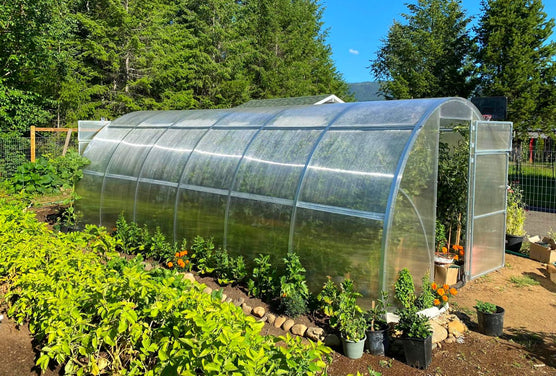Greenhouse Style: Producing an Eco-Friendly Expanding Space
Are you curious about creating a green growing area? Find out just how to create a greenhouse that maximizes natural light, saves water, and includes renewable energy sources. By choosing sustainable products and implementing energy-efficient heating and cooling systems, you can produce a greenhouse that is both efficient and ecologically aware. Discover the crucial elements of greenhouse style that will assist you develop a sustainable and thriving growing room.
Selecting Lasting Materials
When making your green greenhouse, focus on sustainability by thoroughly choosing materials that are environmentally-friendly and promote energy performance. Among one of the most crucial elements of creating an environment-friendly greenhouse is choosing sustainable products. By going with materials that have a marginal influence on the environment, you can decrease your carbon footprint and add to a much more sustainable future.
Start by considering the materials made use of for the structure of your greenhouse. In addition, take into consideration using materials that have a high thermal mass, such as rock or concrete, as they can aid regulate the temperature inside the greenhouse, lowering the requirement for too much home heating or air conditioning.
Another crucial aspect to consider is the glazing product for your greenhouse. Select products that provide superb insulation residential properties, such as dual- or triple-pane glass or polycarbonate panels. These materials can assist trap heat inside the greenhouse, decreasing the amount of power required for home heating during colder months.
In addition, when selecting materials for the interior of your greenhouse, choose sustainable alternatives such as bamboo or recovered wood for shelving and benches. These materials are not just sturdy but likewise advertise the responsible use sources.
Making The Most Of Natural Light
To make the most of natural light in your environment-friendly greenhouse, focus on the strategic positioning of skylights and windows to optimize sunshine exposure throughout the day. This is a critical variable in creating an ideal growing setting for your plants. When selecting the positioning of windows, consider the path of the sunlight throughout the day and how it will certainly affect the various locations of your greenhouse. South-facing home windows will get one of the most sunlight, while east-facing home windows will certainly capture the early morning sunlight and west-facing windows will certainly obtain the afternoon sunlight. By purposefully positioning windows on these sides, you can make certain a regular and also circulation of sunlight throughout the day.
They permit sunlight to get in from above, providing an extra resource of light for your plants. When mounting skylights, consider their size and position (Monarch Farm Greenhouse Utah).
Applying Energy-Efficient Home Heating and Air Conditioning Systems
To better boost the energy effectiveness of your green greenhouse, consider applying energy-efficient heating and cooling down systems. These systems play a crucial role in maintaining optimal temperature and moisture levels for your plants, while reducing power intake and reducing your greenhouse's carbon footprint.

This permits for the exchange of fresh air and assists regulate the temperature inside the greenhouse. These systems make use of much less energy compared to standard air conditioning devices and can efficiently decrease the temperature level inside the greenhouse.
Water Conservation Methods
To further enhance the energy efficiency of your environmentally friendly greenhouse and continue reducing its environmental influence, it is necessary to carry out effective water preservation methods. Water is a precious resource, and with the ideal techniques, you can reduce your greenhouse's water usage while still giving optimal problems for your plants.
One way to conserve water is by utilizing a drip irrigation system. Furthermore, installing a rainwater harvesting system can help keep and record rain for later use in your greenhouse.
One more technique is to mulch your plants. Including a layer of natural product around the base of your plants aids keep wetness in the dirt, minimizing the need for constant watering. Additionally, take into consideration utilizing a water-efficient potting mix that maintains moisture while still offering appropriate drainage.
Last but not least, monitor your greenhouse's water usage frequently. By tracking just how much water you are using, you can identify locations for improvement and make necessary modifications.
Incorporating Renewable Resource Sources

Conclusion
In final thought, by executing sustainable products, optimizing all-natural light, utilizing energy-efficient heating and cooling systems, exercising water conservation strategies, and incorporating eco-friendly energy sources, you can develop an environment-friendly greenhouse design. This will certainly not just benefit the atmosphere yet also promote healthy Monarch Greenhouse Sheds Utah and balanced and sustainable plant development. Go ahead and make a favorable impact on the planet by creating a green expanding room.
When making your environment-friendly greenhouse, focus on sustainability by carefully picking products that are environmentally-friendly and promote energy effectiveness. These products can assist trap warm inside the greenhouse, minimizing the amount of energy required for home heating throughout cooler months.
These systems utilize less energy compared to standard air conditioning units and can efficiently reduce the temperature level inside the greenhouse.
You can include renewable power sources into your greenhouse style to make it extra sustainable and environment-friendly.In conclusion, by implementing lasting products, making best use of natural light, making use of energy-efficient heating and cooling down systems, exercising water conservation strategies, and incorporating sustainable energy resources, you can create an environmentally friendly greenhouse layout.